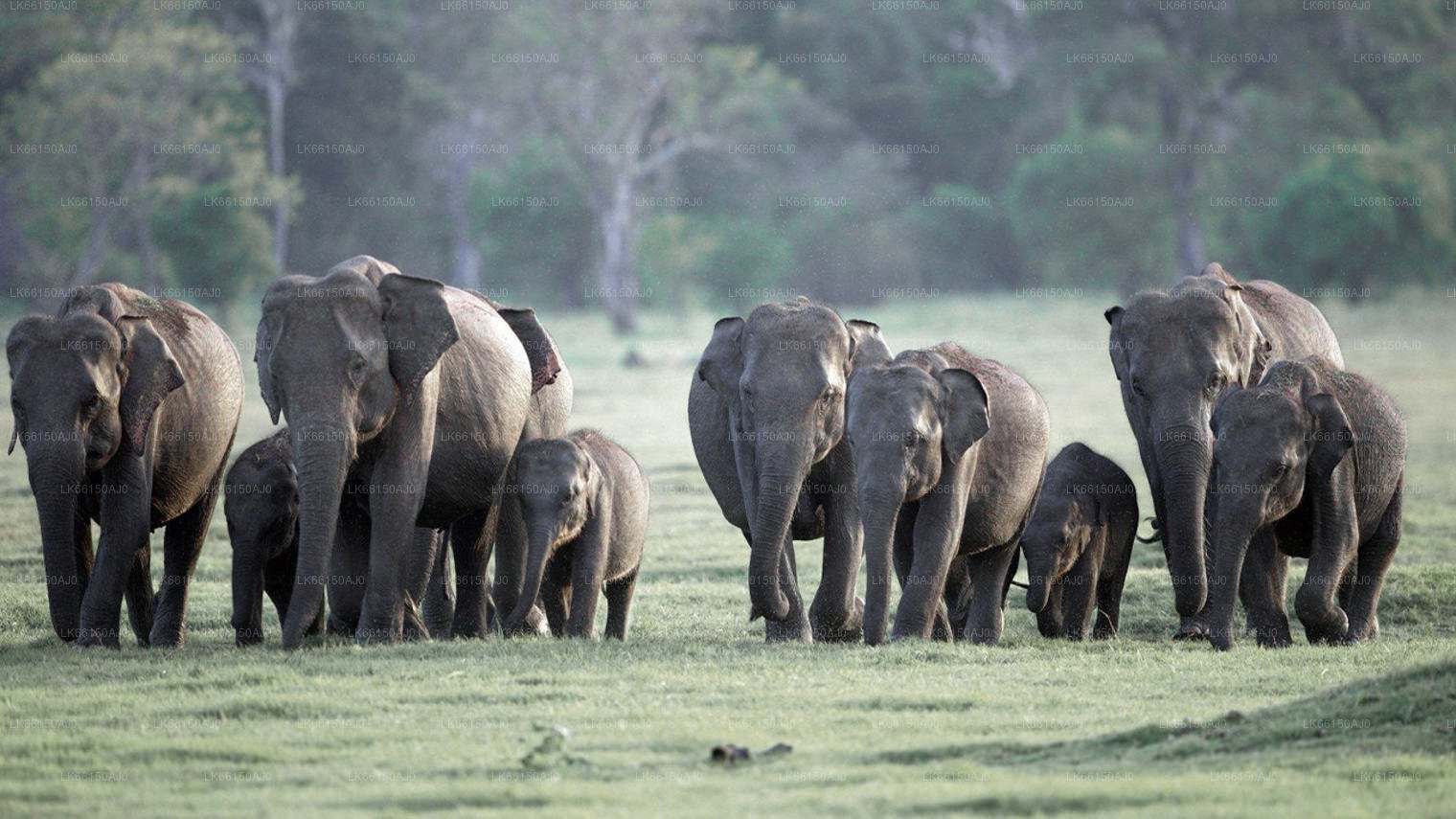
Minneriya linn
Sri Lankal asuv Minneriya on tuntud oma Minneriya rahvuspargi poolest, mis on bioloogilise mitmekesisuse keskus ja koduks suurele Aasia elevantide populatsioonile. Pargi keskpunktiks on maaliline Minneriya veehoidla, mis meelitab ligi loodushuvilisi ja pakub vapustavat tausta loodussafariteks.
Minneriya Lake
Minneriya Lake is a large, man-made reservoir located in the North Central Province of Sri Lanka. It is situated near the town of Habarana and is part of the Minneriya National Park, which is renowned for its rich biodiversity. The lake itself is a key water source in the region and is famous for its association with the annual gathering of wild Asian elephants.
History
Minneriya Lake was constructed during the 3rd century AD by King Mahasena as part of an irrigation project to improve water management and agriculture in the region. It is an ancient reservoir, designed to store water for farming and to combat droughts.
Minneriya National Park
The lake is located within Minneriya National Park, a protected area that spans 8,889 hectares. The park is well-known for its wildlife, including elephants, leopards, and a wide variety of birds.
Elephant Gathering
The lake is famous for the "Minneriya Elephant Gathering," one of the largest congregations of Asian elephants in the world. This spectacular event takes place annually, usually during the dry season, between July and September, when the elephants come to the lake to drink and bathe. Hundreds of elephants, both wild and from surrounding areas, gather here, creating a remarkable sight.
Ecological Importance
The lake and surrounding park are crucial for local wildlife, offering a rich ecosystem for numerous species of birds, mammals, and reptiles. The surrounding area has a mix of dry zone forest and grassland, providing a variety of habitats for the creatures that live there.
Tourism and Activities
Minneriya Lake attracts tourists, especially wildlife enthusiasts, photographers, and nature lovers. Visitors can take safaris within Minneriya National Park to observe the elephants and other wildlife, as well as enjoy birdwatching and nature walks around the lake.
Overall, Minneriya Lake is an important cultural and ecological landmark in Sri Lanka, both for its historical significance and its role in preserving the natural habitat of Sri Lanka's wildlife.
Polonnaruwa ringkonna kohta
Polonnaruwa on Sri Lanka põhja-keskprovintsi suuruselt teine linn. Iidne Polonnaruwa linn on UNESCO poolt maailmapärandi nimistusse kuulutatud. Polonnaruwal on pikk vallutuste ja võitluste ajalugu ning see moodustab õigustatult kolmanda elemendi kultuurikolmnurgas. Kandyst umbes 140 km kirdes asuv Polonnaruwa pakub ajaloo- ja kultuurisõpradele lõputut naudingut, kuna seal on arvukalt olulisi vaatamisväärsusi.
Suur osa tänapäeval säilinud füüsilistest varemetest on omistatud kuningas Parakrama Bahu I-le, kes kulutas palju kuninglikke ressursse linnaplaneerimisele, sealhulgas parkidele, ehitistele, niisutussüsteemidele jne. Tema valitsemisaega peetakse kuldajastuks, mil kuningriik õitses ja õitses visionääri valitseja all. Parakrama Samudra on mammutlik veehoidla, mis on nimetatud oma patrooni järgi. Populaarne kuningapalee, kaunilt nikerdatud kivist elevantidega ümbritsetud audientsi saal ja supelbassein peegeldavad tolle aja suurepäraseid insenerivõimeid.
Põhja-Keskprovintsi kohta
Põhja-Keskprovints, mis on riigi suurim provints, hõlmas 16% riigi kogupindalast. Põhja-Keskprovints koosneb kahest ringkonnast: Polonnaruwa ja Anuradhapure. Anuradhapura on Sri Lanka suurim ringkond. Selle pindala on 7128 km².
Põhja-Keskprovints pakub investoritele arvukalt võimalusi oma ettevõtete alustamiseks, eriti põllumajanduses, põllumajandusel põhinevas tööstuses ja loomakasvatussektoris. Üle 65% Põhja-Keskprovintsi elanikest sõltub põllumajandusest ja põllumajanduse baastööstusest. NCP-d nimetatakse ka "Wew Bendi Rajjeks", kuna provintsis asub üle 3000 keskmise ja suure veehoidla. Sri maha bodiya, Ruwanweli seya, Thuparama dageba, Abayagiri klooster, Polonnaruwa Rankot wehera ja Lankathilake on Põhja-Keskprovintsi hirmuäratavad kohad.














